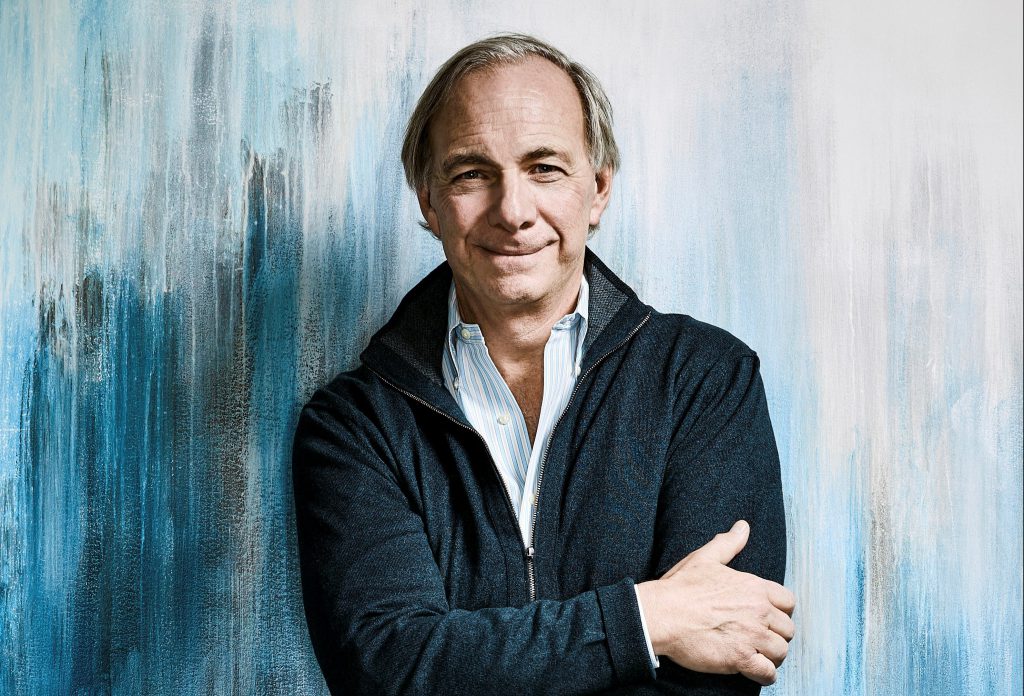Last Thursday, Ray Dalio, founder of the world’s largest hedge fund, published one of the most insightful pieces I’ve read this year.
The document is long. It took me about an hour to read the whole thing.
But it contains some of the best analyses of the economic patterns of the last hundreds of years – designed the help us understand the present and the future.
Ray Dalio’s hedge fund, Bridgewater Associates is notorious for correctly predicting the movement of global markets based on historical patterns.
His understanding is that the economy is like a machine and that there are only so many levers that can be pulled. Therefore, whatever’s happened before is likely to happen again.
That’s how he was able to not only predict – but make money for his clients while markets were crashing in 2008.
One of Ray’s most helpful arguments is that world economies go through 2 main cycles:
- a 7-10 year-long business cycle
- and a 50-75 year long long-term debt cycle.
Most people know the business cycle. It’s the typical recessions, and booms we encounter every so often.
But most people aren’t familiar with the long-term debt cycle, simply because they don’t live long enough to be able to analyze them with perspective.
However, history shows us that all long-term economic cycles follow a similar pattern. It goes something like this:
The world recovers from a crisis (e.g. World War 2) and a new world order emerges (e.g. the US dollar as the global reserve currency). Nobody wants to fight anymore, so there is prosperity.
Economies expand, but eventually, they expand too much. People borrow too much, and a debt crisis ensures (e.g. the financial crisis of 2008).
Then, politicians and central banks borrow money to stimulate the economy, but they slowly run out of ammunition.
Eventually, large amounts of debts are defaulted on, currencies are devalued, there tends to be war, a new global power emerges, and then cycle repeats.
Following the reset, interest rates are set back to normal again, debt is low, and economies enjoy economic prosperity again.
The long-term debt cycle typically comes to an end when economies are heavily indebted, central banks have limited tools to stimulate the economy, and there’s a crisis.
In case you’ve gotten the hint, that’s exactly where we find ourselves today.
Ray Dalio explains that the last cycle started in 1945, exactly 75 years ago, following World War 2 and the establishment of the current monetary system.
And he sees the long-term debt cycle coming to an end now, and a new world order emerging.
The problem is that most people don’t prepare for this economic shift – because they can’t see the bigger picture of the long-term debt cycle.
But as I told you last week, if you think the next ten years will look like the last ten – you’re likely in for a disappointment.
The tables are turning, and we are entering the end of the long-term debt cycle. When exactly this will happen, we don’t know.
What we do know is that throughout history, these ‘resets’ or crises typically last 6 months to 3 years. The system is reset, and the cycle starts over again.
When exactly this crisis starts, or when it ends, nobody knows. But we know it’s going to happen.
And we know that when it’s over, prosperity will flourish again.
Look, there are a lot of doom and gloomers out there who permanently believe the world is going to crash and burn.
But they fail to see the bigger picture: that the world has always gotten better.
And then there are those who believe things will always look rosy, all the time. These people never prepare for – or take advantage of setbacks.
But luckily for us, like most things, economies go in cycles – just like the seasons of the year. There is a season for harvest and a season for reaping. And in between, there is winter too.
Because we know this, we can prepare for it.
Unfortunately, so-called ‘financial experts’ on TV and even politicians have little understanding of money, credit, and debt.
And all of us tend to extrapolate the past into the future – and as a result, we think that things can’t change, because they haven’t in a while.
But as Ray Dalio shows it beautifully, history tends to be rhyme. Money, credit, and debt always follow the same patterns.
For most of us, as the long-term debt cycle comes to an end, the crisis we are in today could be the biggest economic event of our lifetimes.
But it will also mean the greatest opportunities we’ve ever seen.
If you’re looking to start a business, buy a business, invest, make a name for yourself, invent a new industry, re-build a country, or even start a political party – you’ll likely never see a better opportunity than the turning of this cycle.
As we go through it, our job at Beyond Entrepreneurs will be to guide you and enlighten you on opportunities we come across, no matter where they are in the world.
So fasten your seatbelt, and prepare for change. If you embrace it, we guarantee you that it’s going to be a hell of an adventure.
To freedom,
P.S. if you want to read Dalio’s article, you can find it here.

